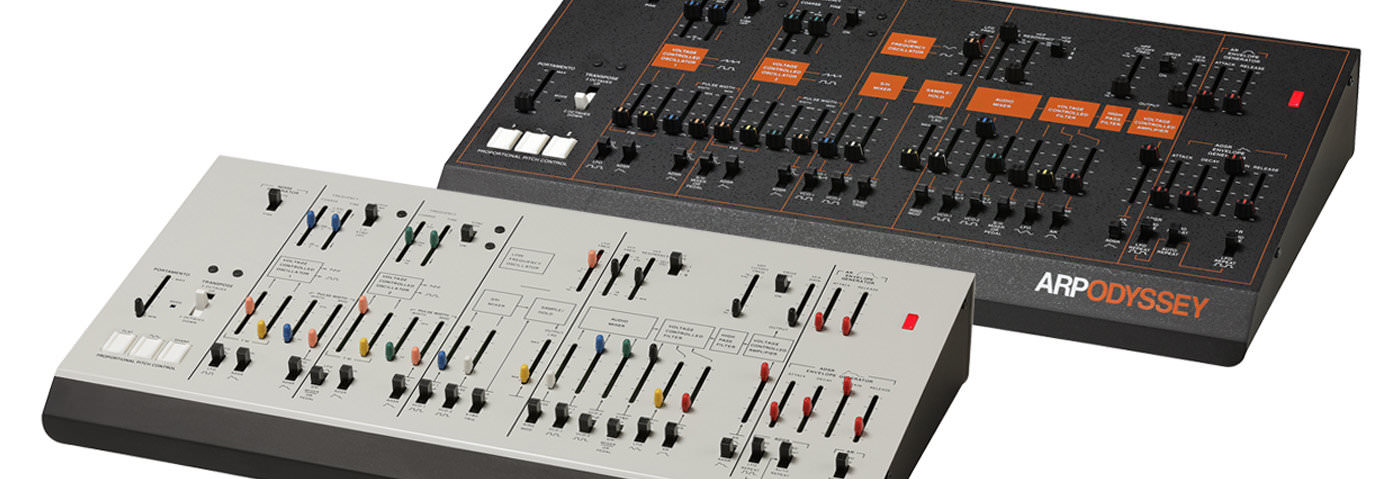ARP’s iconic 70s synth becomes a desktop module. Greg Scarth explains why it demonstrates how specifications only ever tell half the story.
Most musical instruments are a seamless blend of science and art. In the case of things like synths and drum machines that’s even more true, but it applies equally to acoustic instruments: building a guitar involves a combination of woodwork and physics, while something as simple as the tuning of a piano is essentially based on mathematics; playing either one of those instruments elevates it way beyond the precise, cold logic of its design, imbuing it with the heart, soul and creativity of the human performer.
One of the fundamental problems with modern music technology is our overwhelming focus on the technology element. Nowhere is this more apparent than the way we’re so eager to judge new releases on their spec sheets, before we’ve even got our hands on them. A new synth’s announced and we’ve written it off or lauded it as the best synth ever before we’ve even got our hands on it.
On paper, the ARP Odyssey module is nothing special. In terms of specification, it’s fairly basic: two oscillators (which can be played monophonically or duophonically, i.e. up to two notes simultaneously), an LFO, low- and high-pass filters plus two envelope generators (one a more basic AR design, one a four-stage ADSR). You could easily dismiss this module on the basis of the things you won’t find on the spec sheet: there’s no patch memory, no MIDI control for any parameters, and since this is the desktop module version of the original keyboard, there aren’t even any keys.
In my mind, the Odyssey will always be linked to Herbie Hancock, a man who’s almost the walking definition of what can happen when technology meets artistry, as evidenced by his rapid adoption of pretty much every new synth and sampler technology introduced throughout the 70s and 80s. In his hands, the Odyssey was one of the most expressive synths around, but for all Herbie’s dexterity on the keyboard, the module forces you to think about the Odyssey in a different way. Yes, of course, you can hook it up to another keyboard via MIDI or CV and play it that way (and if you want to go down that route then you’ll make a significant saving on the price of the keyboard version), but the module is tailor-made for sequencing externally using hardware.
The ARP Odyssey is an iconic synth, released in 1972 as a rival to the Minimoog and revived in keyboard form by Korg last year. The new Odyssey module is, as the name suggests, a version without the keyboard and that’s about all as far as the changes go. Korg have resisted the urge to mess with the formula in this case, so the synth architecture and features are exactly as you’d find them on the keyboard version. The Odyssey Module is available in two different colours: a mk3-style black-and-orange colour scheme and a mk1-style light grey. Both use the same panel layout and they’re internally identical, but one of the main selling points is the fact that the low-pass filter is actually three filters in one; the various revisions of the original Odyssey used different VCF circuits, and a three-way slider switch allows you to choose between each of them here. The first is the original ARP 4023 filter, a funky 12dB/oct design; the second and third are both 24dB/oct designs, with the former being a very Moog-esque sound and the latter being slightly more bold and capable of higher resonance. The ability to choose between them enhances the versatility of the module, but the bottom line is that all three are big, bold and powerful in slightly different ways.
Taken as a whole, it’s a supremely characterful instrument which reveals another side when triggered from a good hardware sequencer. The bare-bones MIDI implementation means it isn’t necessarily the most obvious choice of synth to sequence via software (you’d probably be better off with something which allows you to edit parameters over MIDI), but the old-school approach is the selling point here. (The Odyssey was already a perfectly good instrument, so it feels right that it hasn’t had too many modern features or upgrades forced upon it.) Korg’s own SQ-1 or an Arturia BeatStep might be the obvious starting points in terms of sequencing, but I also tried sequencing it from the CV output of a Roland SH-101 and over MIDI using an MPC2000XL. Each revealed a slightly different element of the sound, from funky duophonic leads (particularly good with subtle differences between VCO1 and VCO2 settings) through to big, bold basslines and resonant, borderline acid sounds with the rev3 filter.
Having criticised the scientific approach to assessing musical instruments, it seems more than a little churlish to give it a rating, but so be it. Objectively speaking, the Odyssey module is by definition slightly less versatile than the keyboard version, but it sounds just as good. What our scoring system can never take into account is the undefinable quality of a synth’s musicality, which is where the Odyssey truly shines. This is a synth full of character, which reveals a new side of itself when played using step sequencers and other hardware. Sometimes the specifications only tell half the story.
The Verdict
Price: £519
Purchase: ARP Odyssey Module
The Final Word
A refreshing twist on a classic. The Odyssey formula stands the test of time.

10.07 PM
The module has Midi pitchbend control and response, unlike the keyboard version. I heard that it has velocity response too. ?